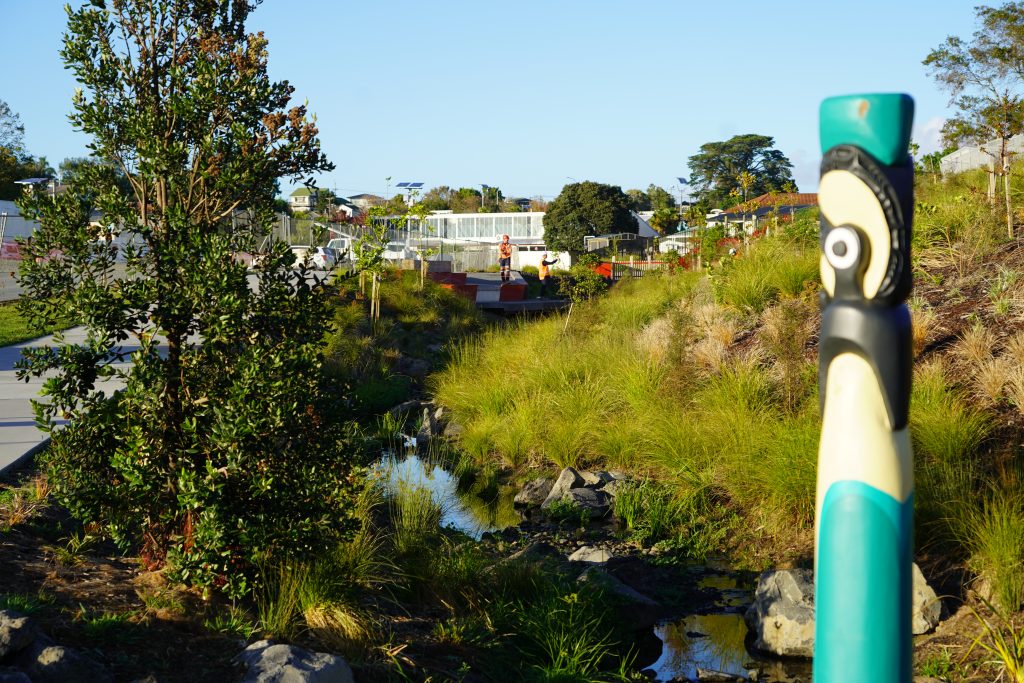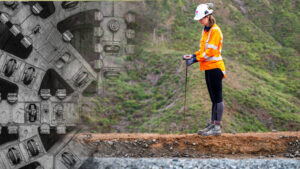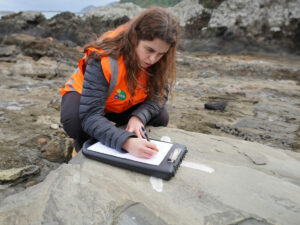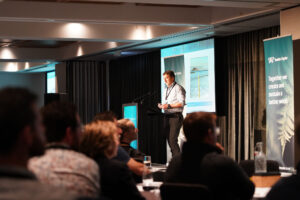The Water New Zealand Stormwater Conference is taking place this week in Rotorua, and it arrives at a crucial time for three-waters (drinking water, wastewater, and stormwater) infrastructure, ‘Local Water Done Well’, and management in Aotearoa, New Zealand.
As the industry gathers to share knowledge on low-impact design, nature-based solutions, and effective flood management, a parallel conversation unfolds across local government with the rollout of the government’s ‘Local Water Done Well’ (LWDW) policies and legislation.
While LWDW aims to improve outcomes across all three waters, the emerging framework presents opportunities and potential risks for the often-overlooked realm of stormwater management.
Lisa Dowson, Tonkin + Taylor’s Sector Lead for Water, writes about elevating stormwater from the ‘poor cousin’ of three waters to a cornerstone of resilient and liveable communities in the era of LWDW. She notes that incorporating stormwater management into wider city planning and development from the very outset offers numerous advantages, guiding us to designing and building our towns and cities to be more efficient, vibrant, and resilient.

Addressing Stormwater Management under Local Water Done Well
LWDW policies and legislation require Councils to outline investments and financing models to deliver on three waters. There is, however, a history of inadequate investment in the water sector, with stormwater consistently ranking lowest in priority. Regardless of how our Councils choose to deliver Local Water Done Well, the key challenges will be affordable delivery and correcting for that historic underinvestment.
Councils and Council-controlled organisations (CCOs) will be subject to economic scrutiny by the Commerce Commission. New Zealand’s water regulator, Taumata Arowai, is already underway establishing network performance standards for both drinking water quality and wastewater.
This head start for drinking water and wastewater potentially creates a risk that investment in their infrastructure will be prioritised over stormwater investment. There is also no clear mechanism for right-sizing stormwater investment; unlike water supply, stormwater can’t be metered in terms of quantity and charging based simply on impervious area has its own challenges.
Despite this, we’re already starting to see stormwater being prioritised more, with Mayor Tania Tapsell of Rotorua highlighting at the opening of this year’s Stormwater Conference that they will be uplifting their investment in stormwater from ~30% to ~$50% of their capital expenditure going forward – a significant shift.
The Case for Upfront Investment for Stormwater
A stormwater-specific requirement under Local Water Done Well legislation is that water service providers (Councils or CCOs), must prepare and adopt ‘Stormwater Network Risk Management Plans’ (SRMP) within two years of the legislation passing, followed by implementing those plans. The SRMPs are a mechanism that should go some way to drive strategic, targeted investments and counter the “poor cousin” syndrome that has historically affected stormwater relative to wastewater and water supply, with more visibility of stormwater hazards and risks.

The SRMPs are required to include network maps identifying critical infrastructure, hazards, and overland flow paths and go on to assess the risk posed by those hazards and how stormwater assets are to be managed. Some Councils already hold a lot of this information, but for others, the development of their SRMP will require a level of data collection and analysis of their stormwater networks that may not have been previously prioritised. The SRMPs will provide the evidence base for identifying and prioritising stormwater investment, based on risk. This enables Councils to take a data-informed, risk-based approach to asset management, enables proactive upfront investment, and move away from a reactive, fix-it-when-it-fails, or clean up and wait for the next event approach.
The other benefit will be the improved ability for Councils to inform planning outcomes and development controls, promoting stormwater as a key driver for how we shape our cities, towns, and communities in New Zealand. As we are learning from recent flood events, recovery costs are colossal. We can expect more and bigger floods going forward, and if we continue as we are, the cost of ongoing recovery quickly becomes unaffordable and unsustainable. Homes will become uninsurable, people will lose their largest assets, and New Zealanders can’t afford to keep paying for flood recovery. There needs to be a shift in how we manage stormwater and how we live around the hazard to limit loss and the costs associated with recovery.
Enabling an integrated approach to Stormwater Management
Well-developed SRMPs are therefore critical to enable the integration of stormwater management into broader urban planning and development.
The cost to produce the data and the SRMPs and to implement it with upfront investment into how we live and grow is significant, but likely still far cheaper than the ongoing cost of recovery from repeated events. If we quantify the need for stormwater investment based on risk, vulnerability and criticality, then we’re able to make strategic and targeted planning infrastructure investment decisions.
Having a plan supports our Councils in pushing for proactive growth planning and investment into high priority areas and enabling all parts of Council to ensure their investments also contribute towards the same outcomes.
Plans also give more certainty to developers. Planned growth means infrastructure is more likely to be ready on time, and council resources aren’t stretched trying to service everywhere at once. Planning our towns and cities and how they grow around stormwater in an integrated approach can offer other benefits like enhanced community spaces, cultural values and recreational areas. However, delivering this in the context of a cost-of-living crisis, and with diminishing skills as people move overseas, is going to be a challenge.
To enable rightsized and effectively focused investment for stormwater, we should be thinking about:
- A forward-thinking approach with a long-term vision and planning. This is necessary to enable a proactive, long-term approach to integrate stormwater management into urban planning and development strategies. It requires joined-up vision, planning and delivery across a range of public and private sector partners, including urban development agencies, transport authorities, land-use planners and developers
- Community engagement and education. The community needs to be engaged and given the information to understand their local stormwater issues and the benefits of sustainable solutions
- Policy and regulatory alignment. National and regional policies and regulations need to align to support and incentivise integrated management of stormwater. This needs to be done with care to avoid driving perverse outcomes
- Making the economic case for proactive investment in stormwater. The cost of recovery is typically far higher than the cost of getting the upfront planning (and investment into that plan) right
Prioritising stormwater management as a key input to broader city planning and development has multiple benefits. By elevating its place in the three waters conversation, it can help shape our towns and cities in more efficient, vibrant, and resilient ways, providing value far beyond mere stormwater management.





















